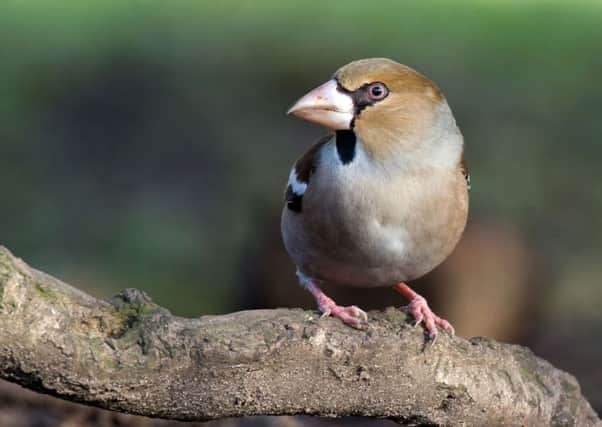Birdwatch: Hawfinch getting ever harder to spot as numbers decline


One or two have been seen inland with recent sightings of individuals at the Old Moor reserve, Rawmarsh, and Angler’s Country Park – listen out for their clicking calls, described as being like a spike being driven into granite.
Otherwise they can be hard to find as they move around surreptitiously in the tops of trees before flying off at the least alarm.
Advertisement
Hide AdAdvertisement
Hide AdTheir most striking feature are their huge conical bill used to crack open tough nuts and even cherry stones, helped by four knobs inside the bill, two above and two below, plus powerful muscles on both sides of the head.
They have mainly orange-brown plumage, boldly marked black and white bars on the wings and the males have a blue-grey nape in summer.
Hawfinches used to be regularly seen each winter in places with plenty of mature trees such as Studley Royal, Fountains Abbey, Woolley Woods, Bretton Country Park or Roche Abbey.
A particularly good place for me was Duncombe Park, Helmsley where hawfinches used to be seen feeding on berries on the Yew Walk near the house.
Advertisement
Hide AdAdvertisement
Hide AdBut hawfinches seem to have all but disappeared from these places with the trees around the chapel at Clumber Park, north Nottinghamshire and the nearby Rufford Country Park the nearest (fairly) reliable places to see them.
There has been a national reduction in their breeding range of more than 76 per cent since the late 1980s with only between 500 and 1,000 breeding pairs left plus autumn arrivals from Europe.
This huge decline is so far unexplained although one suggestion is predation of nests and young by grey squirrels – in Germany where there are no grey squirrels hawfinches are still commonly seen.
Sometimes there are surprises however – in the winter of 2013 a flock of more than 100 hawfinches gathered at Juniper Bottom, Box Hill, Surrey, the largest flock seen in Britain in recent times and presumably from Europe. It would be marvellous to see a similar gathering in a Yorkshire woodland this winter.
Advertisement
Hide AdAdvertisement
Hide AdAmong new arrivals were the first waxwings along the Yorkshire coast and some already inland – will this be a good winter for them following their almost total absence last?
Bramblings were reported in a number of places feeding on beech mast and also visiting garden bird feeders while flocks of siskins were gathering in conifer plantations.
A Siberian stonechat was present at Easington where the Isabelline wheatear remained until Saturday. Siberian chiffchaffs were seen at several places along the Yorkshire coast and a Hume’s warbler at Thornwick Bay, Flamborough.
Whooper swans were making their way back from Icelandic breeding sites and were calling in at sites across Yorkshire while more white-fronted and tundra bean geese were also reported.